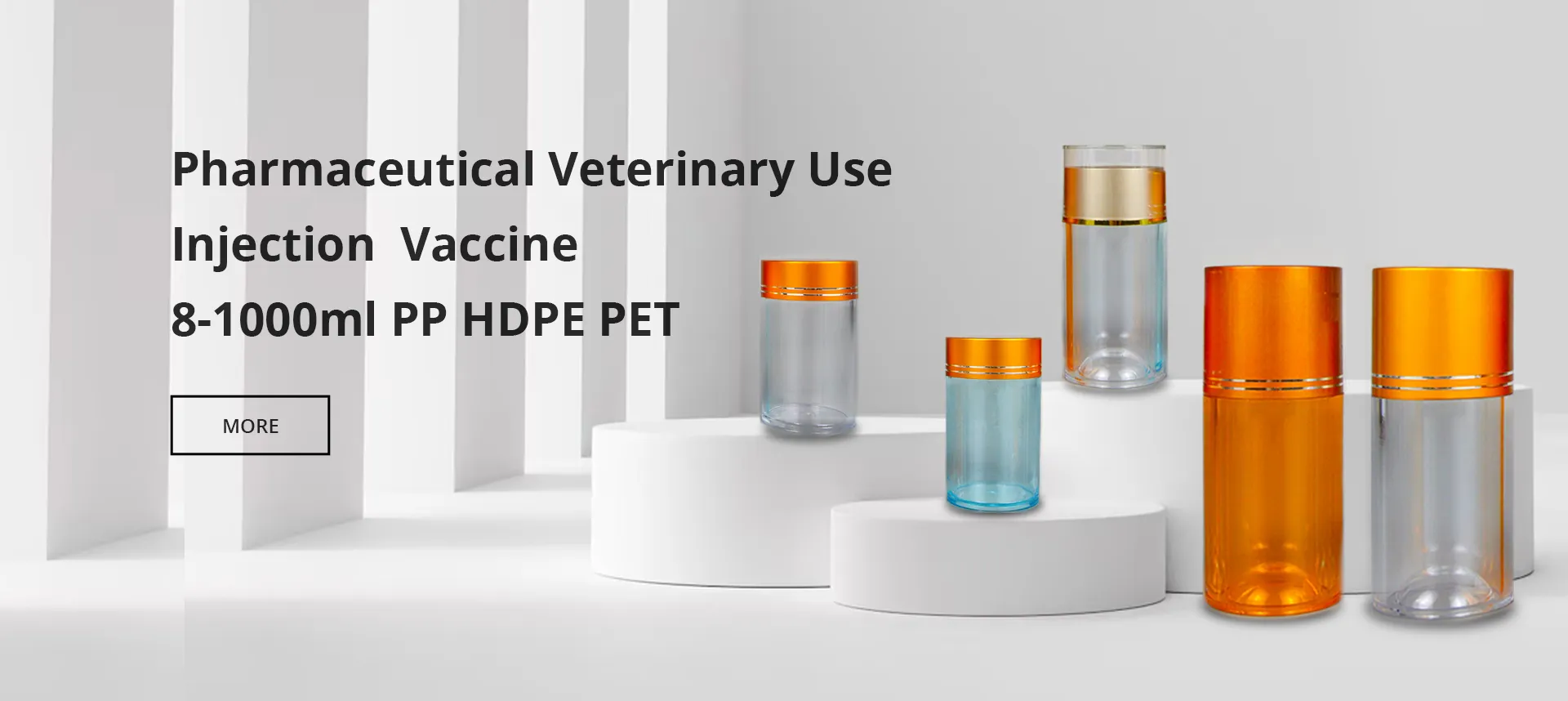Innovative Plastic Vaccine Bottles Revolutionizing Storage and Distribution in Healthcare
The Future of Vaccine Bottles Plastic Innovations
In the wake of global health crises, vaccine development and distribution have taken center stage, leading to innovations in various aspects of vaccine technology. Among these advancements, the materials used in vaccine packaging are often overlooked yet incredibly significant. One particularly promising area of exploration is the use of plastic in vaccine bottles. This article delves into the potential of plastic vaccine bottles and how they could revolutionize the storage and distribution of vaccines.
Historically, vaccine storage has relied heavily on glass vials, which, while effective, come with a range of disadvantages. Glass is fragile, susceptible to breakage, and poses challenges during transportation and storage. Every year, numerous vaccines are wasted due to damaged glass containers. Not only does this replace critical doses of vaccines, but it also leads to increased costs in public health initiatives as resources must be allocated to replace lost supplies.
The shift towards plastic vaccine bottles presents an innovative solution to these challenges. Modern plastic materials can offer similar protective qualities against contamination while being far more durable. Unlike glass, plastics can withstand the rigors of transportation and handling without the risk of shattering. This makes it significantly easier to distribute vaccines to remote areas where healthcare infrastructure may be limited.
Moreover, plastic vaccine bottles can be designed with custom features that enhance usability. For instance, lightweight and squeezable designs can facilitate easier extraction of the vaccine, especially in high-stress environments like immunization campaigns in developing countries. Additionally, the potential for integrated labeling on plastic containers ensures critical temperature and storage information is always visible, reducing the likelihood of mishandling.
plastic vaccine bottle

Another crucial aspect of utilizing plastic materials in vaccine bottles is their potential for improved shelf life. Advanced plastics, such as those with barrier properties, can significantly reduce the permeability of oxygen and moisture, protecting sensitive vaccine formulations from degradation. This feature is vital for mRNA vaccines, which can be particularly sensitive to temperature fluctuations and other environmental factors. By ensuring a more stable environment for vaccines, we can extend their shelf life and decrease the chances of wastage.
Sustainability is also a vital consideration in the context of plastic vaccine bottles. Recent innovations have led to the development of bioplastics, which are derived from renewable resources and are often more environmentally friendly than conventional plastics. As the healthcare industry increasingly focuses on reducing its environmental impact, using sustainable materials for vaccine packaging can contribute to broader goals of resource conservation and waste reduction.
While the benefits of plastic vaccine bottles are numerous, it is essential to address potential concerns. There is a growing public wariness around the use of plastics, driven by awareness of environmental pollutants and microplastics. As such, thorough research and transparent communication about the safety and environmental impact of new plastic materials in medical applications will be crucial. Rigorous testing and regulatory oversight must ensure that these innovations do not inadvertently harm patient safety.
In conclusion, the exploration of plastic vaccine bottles presents a promising strategy to enhance the efficiency of vaccine storage and distribution. By addressing the limitations of traditional glass vials with durable, customizable, and potentially sustainable plastic alternatives, healthcare systems can improve their capacity to respond to public health needs. As we look towards the future, it is essential that both the scientific community and the public remain engaged in discussions about safety, efficacy, and sustainability in vaccine packaging. Embracing innovation in this domain can ultimately lead to better health outcomes for populations worldwide.
-
Aesthetic Makeup Spray Bottles | Fine Mist Empty RefillableNewsAug.19,2025
-
White Plastic Veterinary Vaccine Vials | Lab Liquid BottlesNewsAug.18,2025
-
Plastic Medicine Liquid Bottle: Secure Flip Top Drug VialsNewsAug.17,2025
-
Durable 250ml Blue Plastic Vaccine Vial for Lab & Vet UseNewsAug.16,2025
-
Sterile Virus Sample Tubes: Secure & Reliable Specimen CollectionNewsAug.15,2025
-
White 250ml Plastic Vaccine Vial for Lab & Vet MedicineNewsAug.14,2025
























